Ammar Mahmood
Hierarchical Classification of Kelps utilizing Deep Residual Features
Jun 26, 2019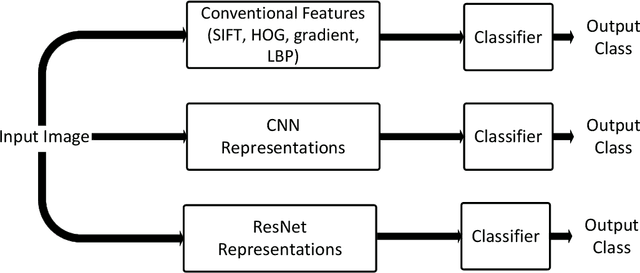
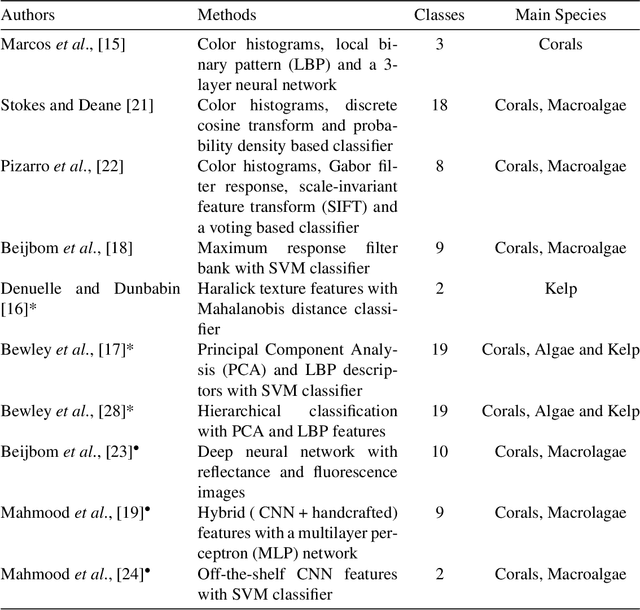
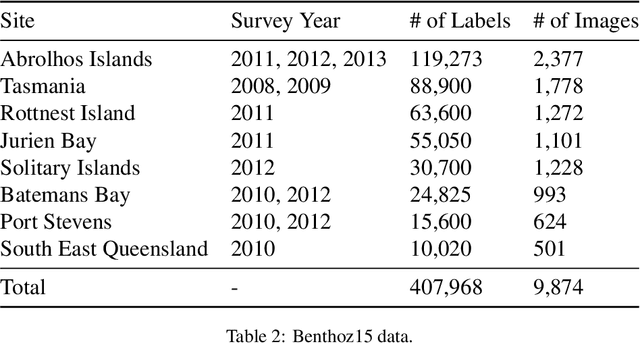

Abstract:Across the globe, remote image data is rapidly being collected for the assessment of benthic communities from shallow to extremely deep waters on continental slopes to the abyssal seas. Exploiting this data is presently limited by the time it takes for experts to identify organisms found in these images. With this limitation in mind, a large effort has been made globally to introduce automation and machine learning algorithms to accelerate both classification and assessment of marine benthic biota. One major issue lies with organisms that move with swell and currents, like kelps. This paper presents an automatic hierarchical classification method to classify kelps from images collected by autonomous underwater vehicles. The proposed kelp classification approach exploits learned image representations extracted from deep residual networks. These powerful and generic features outperform the traditional off-the-shelf CNN features, which have already shown superior performance over the conventional hand-crafted features. Experiments also demonstrate that the hierarchical classification method outperforms the common parallel multi-class classifications by a significant margin. Experimental results are provided to illustrate the efficient applicability of the proposed method to study the change in kelp cover over time for annually repeated AUV surveys.
ResFeats: Residual Network Based Features for Image Classification
Nov 21, 2016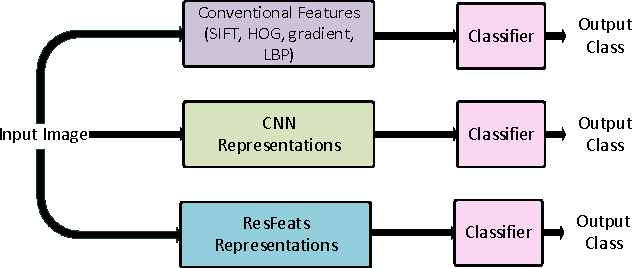
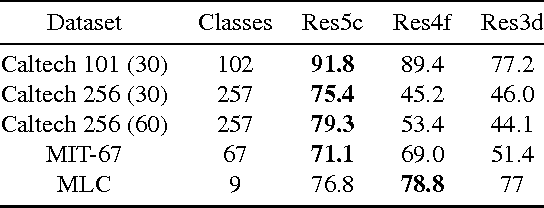

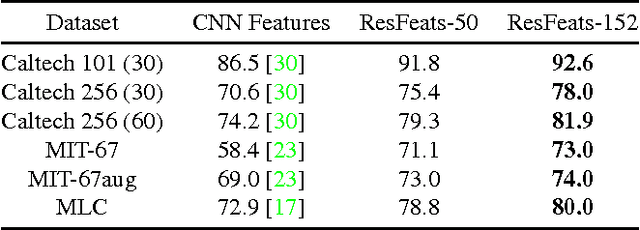
Abstract:Deep residual networks have recently emerged as the state-of-the-art architecture in image segmentation and object detection. In this paper, we propose new image features (called ResFeats) extracted from the last convolutional layer of deep residual networks pre-trained on ImageNet. We propose to use ResFeats for diverse image classification tasks namely, object classification, scene classification and coral classification and show that ResFeats consistently perform better than their CNN counterparts on these classification tasks. Since the ResFeats are large feature vectors, we propose to use PCA for dimensionality reduction. Experimental results are provided to show the effectiveness of ResFeats with state-of-the-art classification accuracies on Caltech-101, Caltech-256 and MLC datasets and a significant performance improvement on MIT-67 dataset compared to the widely used CNN features.
 Add to Chrome
Add to Chrome Add to Firefox
Add to Firefox Add to Edge
Add to Edge